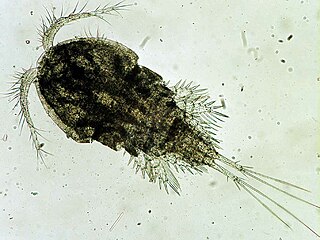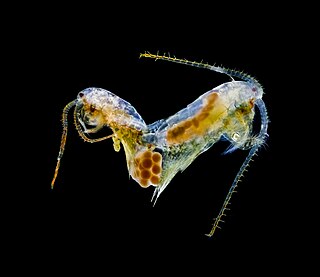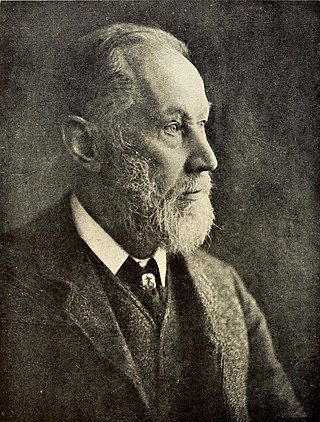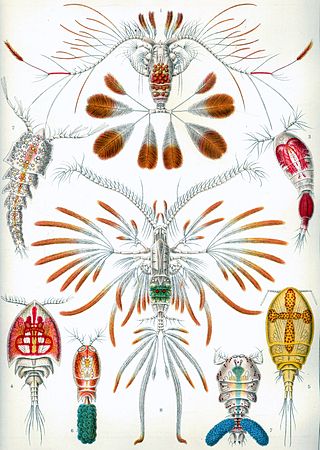
Calanus is a genus of marine copepod in the family Calanidae. The genus was split in 1974, with some species being placed in a new genus, Neocalanus. The following species are recognised:

Cyclops is one of the most common genera of freshwater copepods, comprising over 400 species. Together with other similar-sized non-copepod fresh-water crustaceans, especially cladocera, they are commonly called water fleas. The name Cyclops comes from the Cyclops of Greek mythology, as they have a single large eye; in Cyclops, the eye may be either red or black.

Afrocyclops is a genus of copepod crustaceans in the family Cyclopidae, containing the following species:

Boeckella is a genus of copepods in the family Centropagidae.
Calamoecia is a genus of copepods in the family Centropagidae confined to Australasia. It is thought to have evolved since the separation of the Australian continent from Antarctica. Three of the Australian endemic species are listed as vulnerable species on the IUCN Red List. The genus contains the following species:

Canthocamptidae is a family of copepods. Most of the 700 species are confined to fresh water, although there are also marine species. It contains the following genera:

George Stewardson Brady was a professor of natural history at the Hancock Museum in Newcastle-upon-Tyne who did important volumes on Copepoda and Ostracoda, including those from the Challenger expedition.

Acartia is a genus of marine calanoid copepods. They are epipelagic, estuarine, zooplanktonic found throughout the oceans of the world, primarily in temperate regions.

Centropagidae is a family of copepods in the order Calanoida. Its members are particularly known as plankton in coastal waters and in fresh water in Australia and southern South America. They are also found on subantarctic islands and in lakes in Antarctica.

Artotrogidae is a family of copepods in the order Siphonostomatoida.
Neocalanus is a genus of marine copepods. They are a dominant component of the open water ecosystems of the northern Pacific Ocean. Neocalanus are large copepods, reaching body lengths of more than 8 mm (0.31 in) in Neocalanus plumchrus.
Calanus marshallae is a species of copepod which forms part of the zooplankton in the northern Atlantic Ocean and the northern Pacific Ocean.

Calanus helgolandicus is a copepod found in the Atlantic, from the North Sea south to the western coast of Africa. The female has an average size of about 2.9 millimetres (0.11 in) and the male has an average size of about 2.7 millimetres (0.11 in).
Neocalanus plumchrus is a large species of copepod found in the Pacific and Arctic Oceans. It was described in 1921 H. by Marukawa. N. flemingeri was formerly considered as conspecific, likely as a form, until it was split in 1988 by Charles B. Miller.
Neocalanus cristatus is a species of copepod found primarily in the northern Pacific.

Aetideidae is a family of copepods belonging to the order Calanoida.

Arietellidae is a family of copepods belonging to the order Calanoida.
Clytemnestrinae is a subfamily of copepods belonging to family Peltidiidae in the order Harpacticoida.
Cylindropsyllidae is a family of copepods belonging to the order Harpacticoida. It was first described by Sars in 1909

Megacalanidae is a family of copepods belonging to the order Calanoida.













